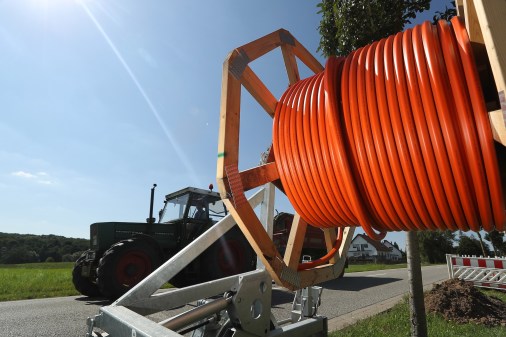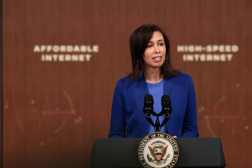Rosenworcel says ISPs are flocking to ‘historic’ broadband subsidy effort

The Federal Communications Commission’s “most urgent priority” is providing broadband to Americans struggling to work or educate themselves remotely, Acting Chairwoman Jessica Rosenworcel said Wednesday to the National Association of Counties.
To accomplish that, Rosenworcel said, her current focus is on “executing on the directives” laid out for the FCC within the American Rescue Plan, the $1.9 trillion economic package President Joe Biden signed earlier this month, including more than $7 billion to improve remote broadband access for schools and libraries supported by the agency’s E-Rate program.
The FCC is also reviewing applications from internet service providers to join the Emergency Broadband Benefit program, which was finalized in December as a $3.2 billion broadband subsidy for low-income households — the largest in the commission’s history, Rosenworcel said.
The “historic” subsidy, she said, has already received more than 380 applications from ISPs interested in offering discounted services, though a program start date hasn’t been set. The FCC will send eligible households $50 per month for broadband service and as much as a $100 one-time benefit for a new computer or tablet. The commission is also seeking help from community organizations, schools and faith-based institutions to spread the word about the new subsidy.
The goal, Rosenworcel said, is to enact what she called a “100% policy” of providing broadband access to all Americans.
“Broadband is no longer just ‘nice to have.’ It’s a ‘need to have,’ for everyone, everywhere,” Rosenworcel said during the NACo event.
Separately, the agency is also making progress in developing more-accurate broadband coverage maps, Rosenworcel said, an effort that has been ongoing for more than a year. One her first actions upon becoming the FCC’s chair in January was to set up a broadband data task force to ensure that future coverage maps are more accurate than the current set, which count an entire census block as being served by an internet provider if just one home in the block is served. That inaccurate methodology will eventually be replaced by a more granular system called the Digital Opportunity Data Collection.
“Our official data could very easily and systematically overstate where service is present, because this methodology means a whole lot of homes with no broadband access can show up as served in Washington,” Rosenworcel said, echoing the criticisms of state lawmakers that filed challenges with the FCC over inaccurate coverage maps.






